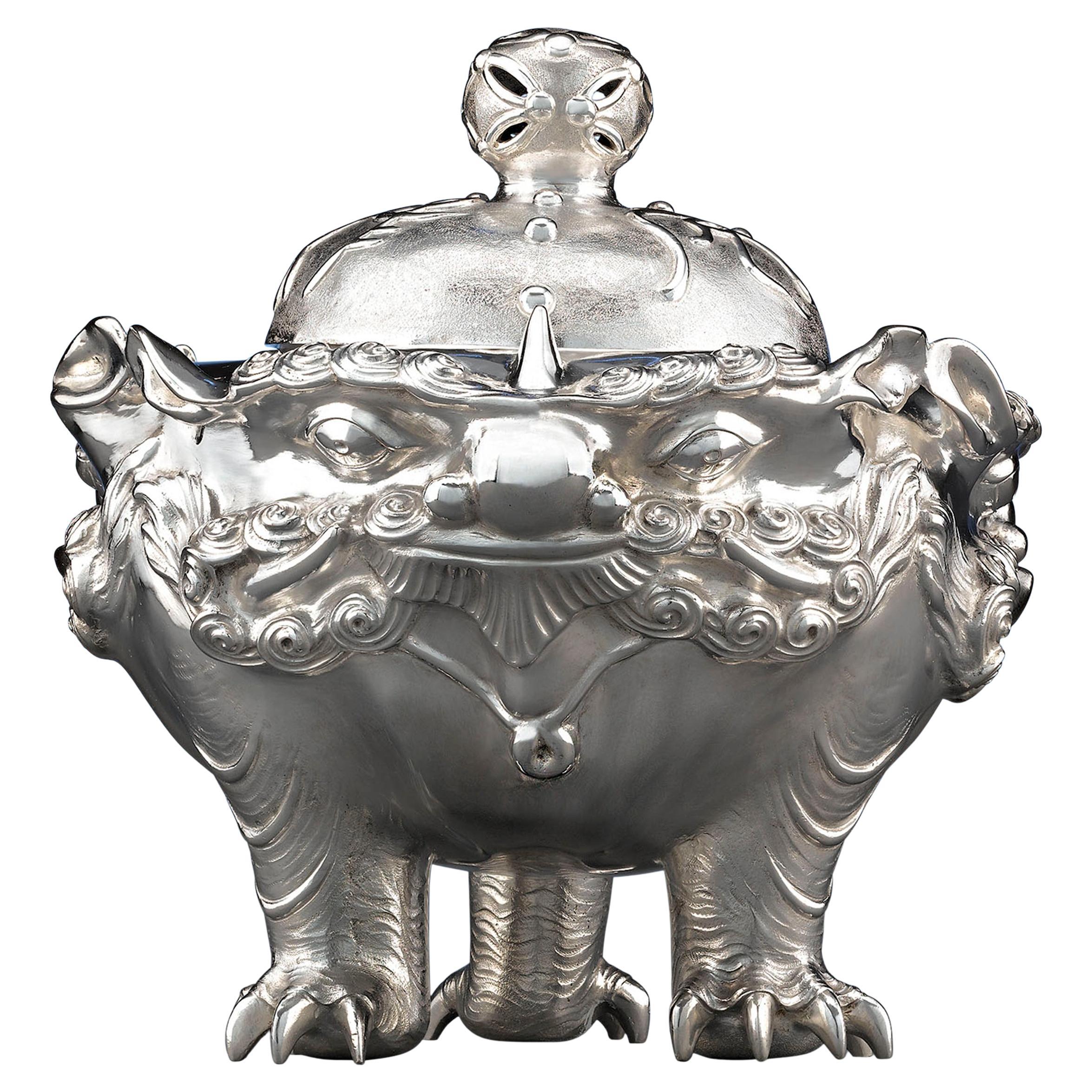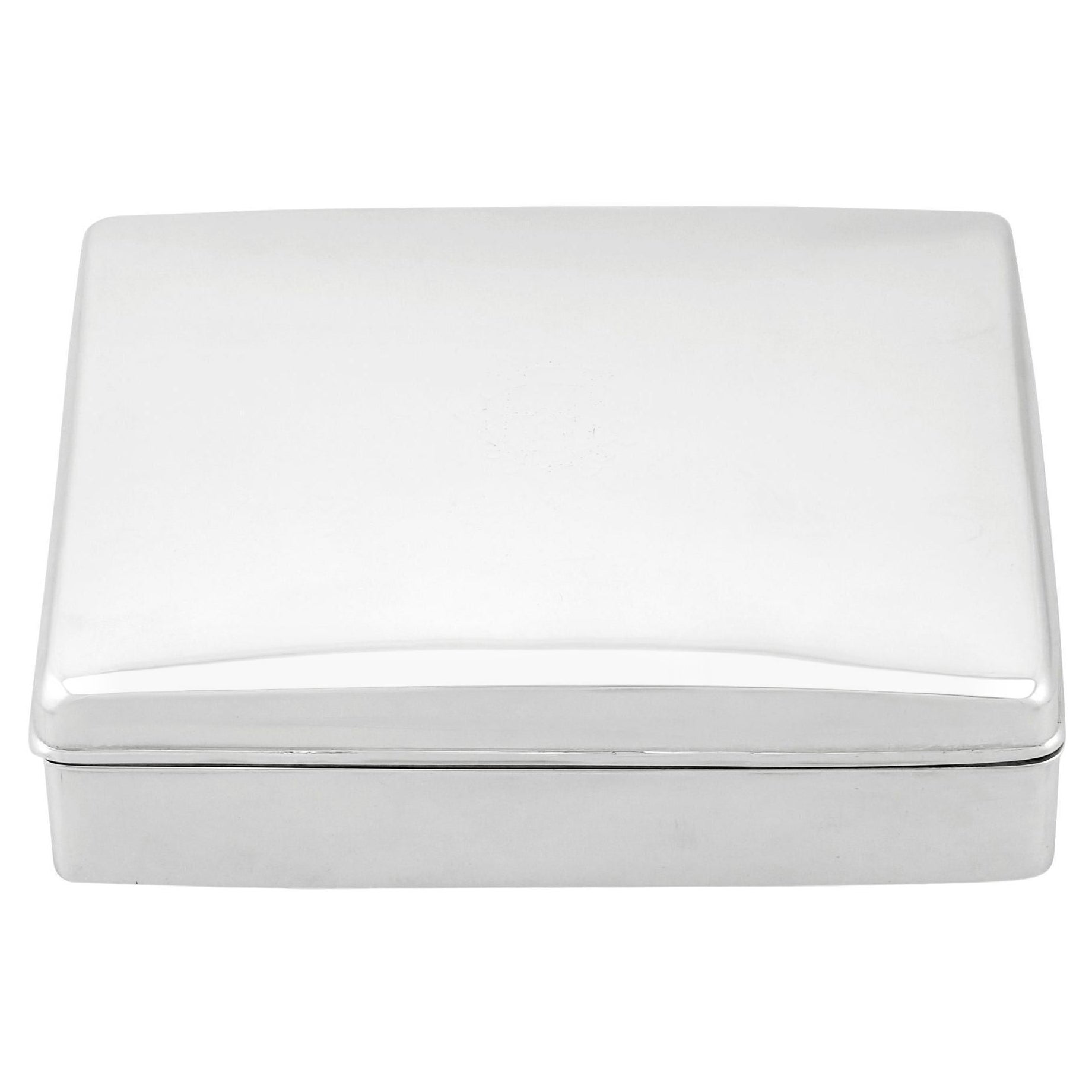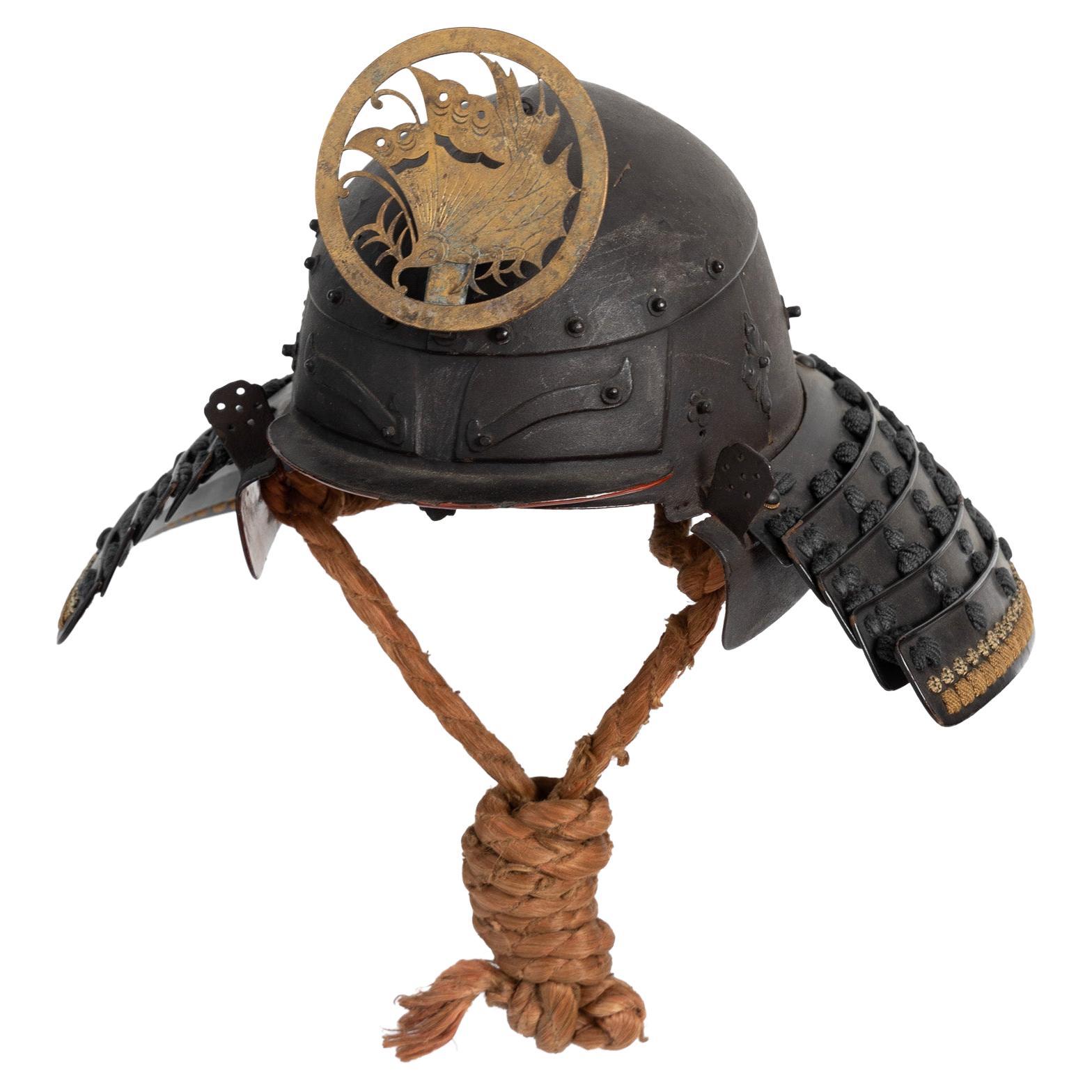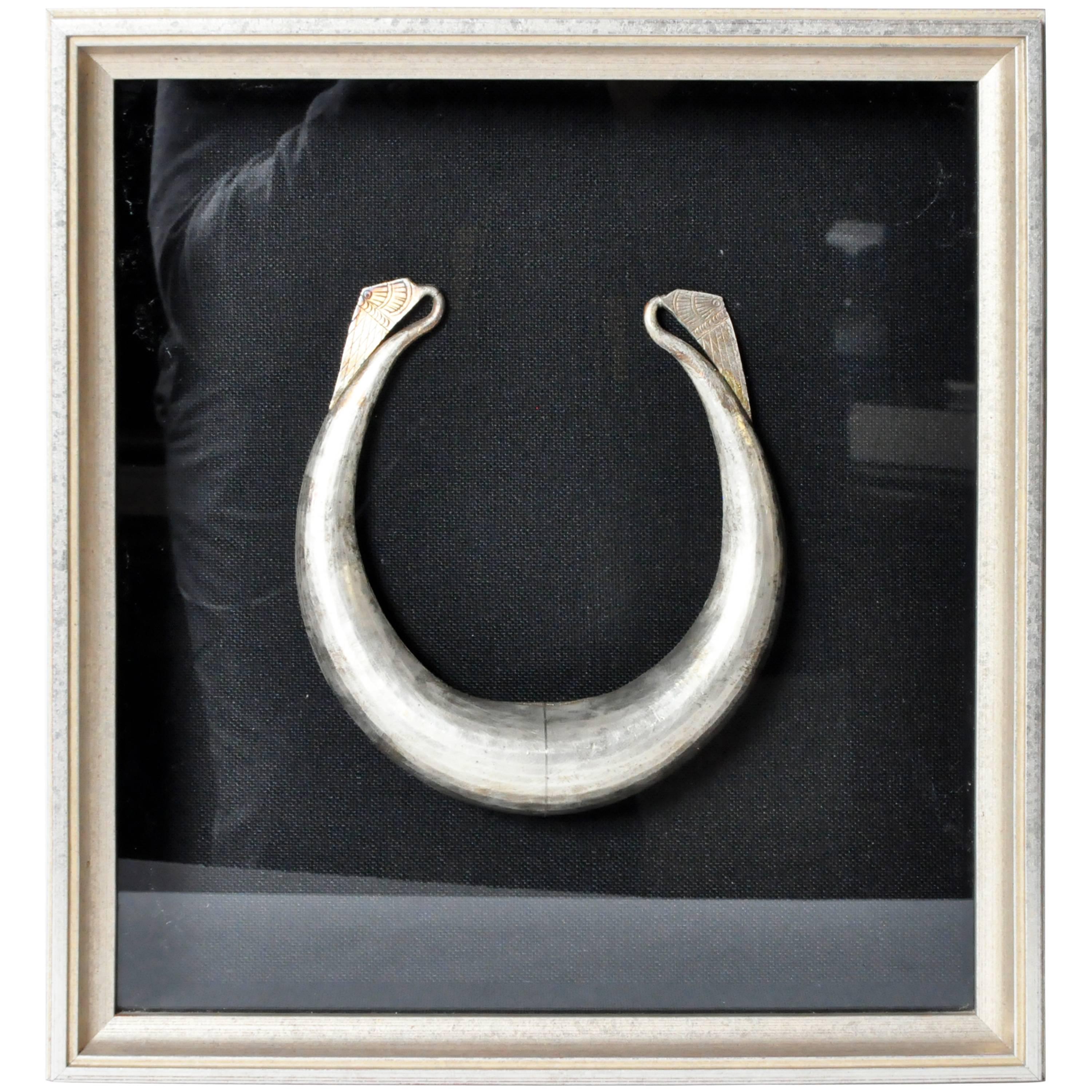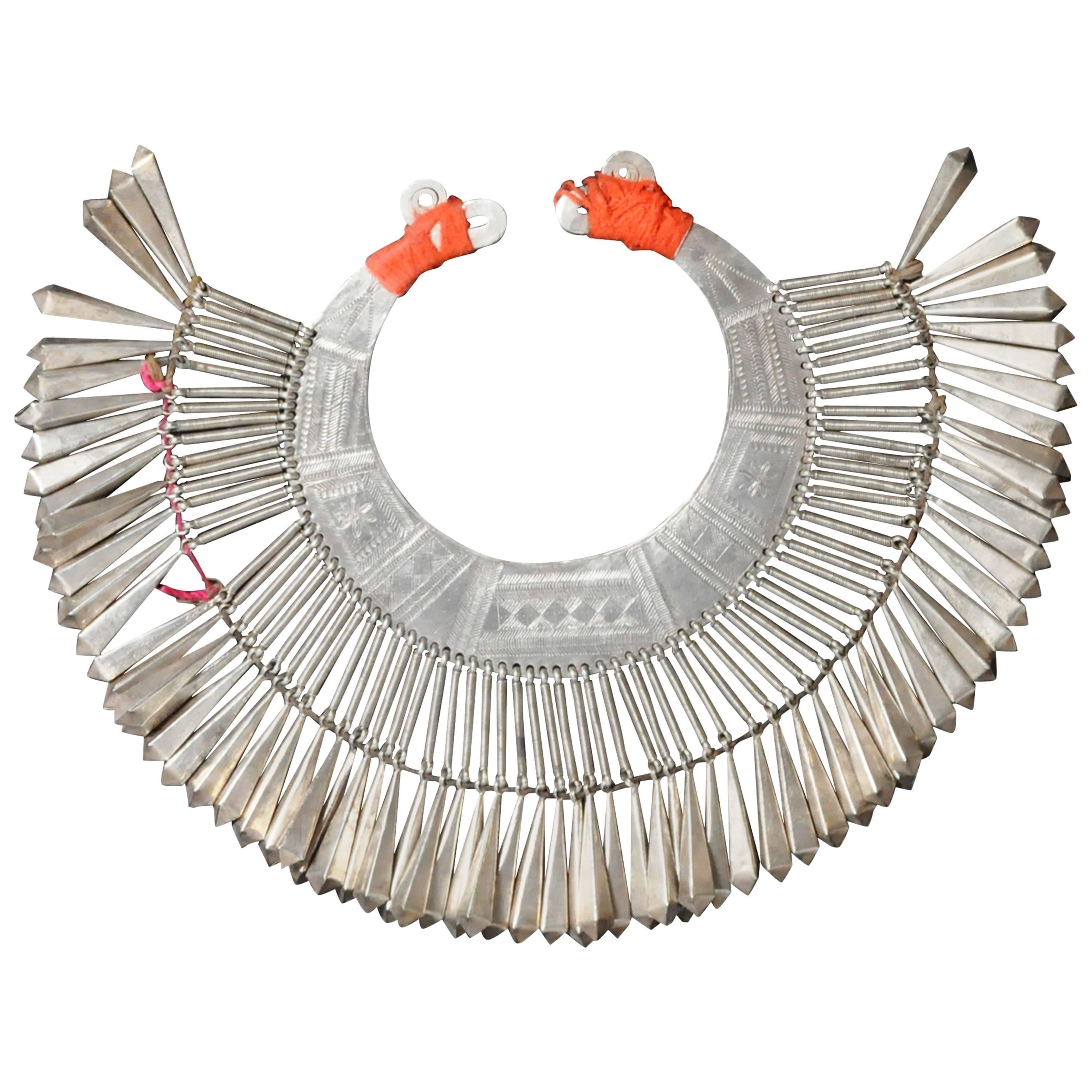Items Similar to Japanese Silver Karabitsu Bonbonniere Box, Taisho Period, Japan
Want more images or videos?
Request additional images or videos from the seller
1 of 14
Japanese Silver Karabitsu Bonbonniere Box, Taisho Period, Japan
About the Item
A fine Japanese silver bonbonniere box in the shape of a karabitsu, Meiji Period, circa 1900, Japan.
The small bonbonniere crafted of silver in the form of a karabitsu, a storage chest for precious objects, most popularly used to store samurai armor. The rectangular chest comprised of six slightly splayed legs, and a well fitting top with images of stylized flowers and mon. This stylized four petal flower is referred to as hanabishi, representing the water chestnut flower, a symbol often used by samurai families.
The underside with a small stamped "jungin" (pure silver) mark. The jungin mark indicates a silver purity of at least 95%, higher than the 92.5% purity of sterling silver.
Known as bonbonnieres, these small boxes, usually of silver, were used from the Meiji Period onwards as presentation boxes containing small gifts and keepsakes for visiting dignitaries and important guests.
Weight: 113.7 grams / 3.66 troy ounces.
- Dimensions:Height: 1.25 in (3.18 cm)Width: 2.5 in (6.35 cm)Depth: 2 in (5.08 cm)
- Style:Meiji (Of the Period)
- Materials and Techniques:
- Place of Origin:
- Period:
- Date of Manufacture:circa 1920
- Condition:Wear consistent with age and use. WIth light scratches from polishing. With some minor tarnish.
- Seller Location:Austin, TX
- Reference Number:1stDibs: LU894733910572
About the Seller
5.0
Platinum Seller
These expertly vetted sellers are 1stDibs' most experienced sellers and are rated highest by our customers.
Established in 2001
1stDibs seller since 2010
306 sales on 1stDibs
Typical response time: 1 hour
- ShippingRetrieving quote...Ships From: Austin, TX
- Return PolicyA return for this item may be initiated within 7 days of delivery.
More From This SellerView All
- Pair Japanese Bronze Pagoda Temple Lanterns, Taisho Period, circa 1920, JapanLocated in Austin, TXAn elegant pair of Japanese cast and lacquered bronze pagoda lanterns, Taisho Period, circa 1920, Japan. The lanterns a true pair, with mirrored decorations and lantern doors opening in opposite directions. The lanterns of traditional toro form, cast in bronze, and lacquered. Each lantern comprised of three parts - the "roof", the "fire box", and the pedestal. This type of pedestal lantern is called a dai-doro, as opposed to the hanging lantern type, tsuri-doro. The hexagonal roof of the lantern, reminiscent of temples or pagodas, features a wonderful, dense cloud pattern with three heart-shaped cutouts, known as inome, or boar's eye. The roof topped by a hoju, the Buddhist flaming Jewel of Wisdom. Each of the six corners feature a fantastic shachihoko, mythical beasts with the face of a tiger and body of a fish. Bells are suspended from the shachihoko. The globular body of the lantern features four pierced panels with the three leaf hollyhock mon of the Tokugawa clan surrounded by a karakusa pattern of scrolling vines. One panel serving as a hinged door with a lock stylized as the Three Jewels...Category
Vintage 1920s Japanese Taisho Lanterns
MaterialsBronze
- Japanese Cloisonne Box by Inaba, Meiji Period, circa 1900, JapanBy Inaba Cloisonne Co.Located in Austin, TXA fine Japanese cloisonne hinged box with pheasant and autumn foliage, by Inaba Nanaho and the Inaba Cloisonne Company, Meiji period, circa 1900, ...Category
Antique Early 1900s Japanese Meiji Metalwork
MaterialsCopper, Enamel, Metal
- Japanese Cloisonne Box, Meiji Period, Late 19th Century, JapanLocated in Austin, TXA very fine and intricately decorated Japanese cloisonné box and cover, Meiji period, late 19th century, Japan. The lidded trinket or jewelry...Category
Antique 1890s Japanese Meiji Metalwork
MaterialsBrass, Copper, Enamel
- Japanese Silver Incense Burner, Akoda Koro, by Norurma, Meiji Period, JapanLocated in Austin, TXA lovely and luxurious Japanese silver incense burner of lobed melon form, akoda koro, marked jungin and signed Nomura, Meiji Period, circa 1900, Japan. The silver koro...Category
Vintage 1910s Japanese Meiji Metalwork
MaterialsSilver, Sterling Silver
- Japanse Silver and Gold Bonbonniere by Mitsukoshi, Showa Era, 1935, JapanLocated in Austin, TXA small and delightful Japanese silver bonbonniere with an applied gold Imperial Chrysanthemum Seal, marked "jungin" and "Mitsukoshi", Showa Era, 1935, Japan. This bonbonniere is ...Category
Vintage 1930s Japanese Showa Metalwork
MaterialsGold, Silver, Sterling Silver
- Pair of Japanese Bronze Hibachi with Silver and Copper Inlay, Meiji PeriodLocated in Austin, TXAn exquisite pair of Japanese mixed metal bronze hibachi with idyllic landscape scenes, Meiji period (1868-1912), late 19th or early 20th century, Japan. The hibachi of generous proportions, with a high, slightly splayed foot, a short, narrow waist, and a large and wide cylindrical body. The body decorated in the mixed metal technique. The bronze carved and set with inlays of copper and silver to create wonderful landscape scenes. A pair of animal mask handles to the sides. Each hibachi with a cast signature reading ?? (Toyomi?) to the underside. One side of each hibachi depicting an evening scene, with scholars walking about a mountain retreat, replete with a waterfall, pavilions, pagodas, and pine trees, all shimmering under a full moon. The other side of the hibachi depicting a daytime scene, with a view of similar pavilions, pagoda, and pine, though with boats also visible in the distance. Copper inlay has been used for the roofs and the trunks of the pine trees. Silver inlay has been used for the pine needles, scholars, building supports, water, boats, moon, as well as the distant mountains. Originally used as a simple and elegant space heater...Category
Antique Late 19th Century Japanese Meiji Metalwork
MaterialsSilver, Bronze, Copper
You May Also Like
- Meiji Period Japanese Silver CenserLocated in New Orleans, LAThis stunning Meiji period silver censer is a work of exquisite detail. Crafted by renowned silversmith Masatoshi of Tokyo, the censer, or incense burner...Category
20th Century Japanese Meiji Metalwork
MaterialsSilver
- 1900s Antique Chinese Export Silver Cigarette BoxLocated in Jesmond, Newcastle Upon TyneA fine and impressive antique solid Chinese Export Silver cigarette box; an addition to our diverse silver box collection This fine antique Chinese Export Silver (CES) cigarette box has a plain rectangular form with rounded corners. The surface of the body of the box is plain with an applied molded border to the rim. The subtly domed hinged cover of the box is ornamented with the contemporary engraved monograph initials ‘CBK’ in addition to a moulded border to the rim. The hallmarks struck to the underside of this impressive box include: Maker's mark: WH (Wang Hing & Company) Silver quality/purity mark: 90 (900/1000) Character mark: Untraced. Note: The majority of such boxes have a wood lining to the interior to provide strength, due to a poor gauge of silver; a sign of quality when examples are unlined and of solid silver. Condition This antique cigarette box...Category
Early 20th Century Cypriot Other Tobacco Accessories
MaterialsSilver
- A Very Good 19th Century Iron & Mixed Metal Tsuba, Japan Edo Period (1603-1868)Located in Ottawa, OntarioA finely decorated iron & mixed metal tsuba, showing a dark-brown iron ground decorated in low relief with organic inspired motifs in gold, silver & copper.Category
Antique Mid-19th Century Japanese Edo Metalwork
MaterialsGold, Silver, Copper, Iron
- Okitenugui Kabuto Samurai Helmet Shaped as a Head Towel Saika, Early Edo PeriodLocated in Milano, ITOkitenugui kabuto Samurai helmet shaped as a head towel Saika, early Edo period, 17th century The Haruta armorers who moved to Kii province in the early 17th century, took the name from the village where they worked, Saika, near Wakayama, possibly on request of the local daimyo, Asano Yukinaga, a great armour amateur. Specialised in the construction of plate helmets, they produced mainly two typologies of kabuto: one with six plates covered with a chrysanthemum-shaped plate on top and one shaped as a “head towel”, called okitenugui. The latter type of kabuto employs very heavy plates crafted in a curved manner and was improved in order to make it resistant to firearms. This okitenugui kabuto features some distinctive decorations of the Haruta school, including the application of cut-out iron elements, including eyebrows, washers and lozenge-shaped decorations on the sides. The ring on the top, however, is a rare feature and could be used to hold a small war flag.Category
Antique 17th Century Metalwork
MaterialsIron
- Yao Tribe Silver TorcLocated in Chicago, ILThis finely crafted piece was made high in the mountains above Thailand, Laos and Burma (modern day Myanmar) by an indigenous hill tribe. The Yao people are skilled silversmiths who ...Category
20th Century Laotian Tribal Metalwork
MaterialsSilver
- Lisu Tribe Silver Collar NecklaceLocated in Chicago, ILThis finely crafted piece was made high in the mountains of southeast China, Thailand and Burma (modern day Myanmar) by an indigenous hill tribe. The Lisu people are know for their v...Category
20th Century Thai Tribal Metalwork
MaterialsSilver
Recently Viewed
View AllMore Ways To Browse
Cast Iron Japanese Tea Kettles
Antique Cast Iron Water Kettle
Cloisonne Fish Bowl
Japanese Chocolate Set Antique
Antique Sprinkler Bottles
Champleve Censer
Tiffany China Bowl
Yemeni Jambiya
Antique Japanese Saki
Chinese Dragon Costume
Vintage Arabic Coffee Pot
Antique Indian Spice Tin
Brass Rose Water Sprinkler
Chinese Copper Teapot
India 19th Century Hand Etched Brass Vase
Japanese Belt Buckle
Kulah Khud
Quicksilver Antiques
